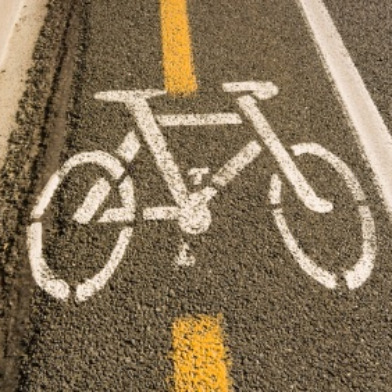
So, you returned from your semester in Amsterdam raving about elevated bike lanes and reduced traffic noise, but you weren’t sure how to spread the gospel of bike to the US? Well, rest assured my friend, your regional transportation entities are all ears.
Together with bicycling advocates, representatives from the Municipal Transportation Commission, BART and the SF Municipal Transportation Authority came together in San Francisco today to hear a presentation on European approaches to increasing and improving urban bicycling. Experts from Holland, Denmark and Belgium spoke about what has helped and hindered their efforts, and answered questions about how these lessons could be applied to the City and beyond.
Presented by the German Marshall Fund of the US, an organization that encourages comparing policy between Europe and the states, the event highlighted how far San Francisco has to go if it wants to achieve the bike-friendliness of Europe’s cities. However, Supervisor David Chu popped in between speakers to encourage optimism. After reminding the room that he doesn’t own a car and does bike to work, Chu said, “We’ve been biking hard, and biking into the wind. Now I think the wind is finally at our back.”
He may be right, as San Francisco’s bike plan nears possible enactment after three years of political stymie and drama. But after the bike lanes go in, actually increasing bike use could take a while, according to Dutch bicycle advocate Hans Voerknecht. The international coordinator for Fietsberaad (Bike Council), a Dutch organization dedicated to sharing expertise on all matters cycling, showed the group a handy chart showing the typical return on investment in bike infrastructure. With increased spending, ridership rates did not rise for several years.
A major sea change in attitudes toward bicycling would need to occur as well. “I ask people here, ‘Do you like cycling,’ and they say yes, they like it, they are cyclists,” says Voerknect. “In the Netherlands,” he continues, “people don’t consider themselves bicyclists any more than they consider themselves bread-eaters.” If you don’t believe him, check out this video of rush hour in Amsterdam. While the cycling volume is intense, the mood is relaxed as thousands of people bike through the city all at once (jump to 1:33 to hear birds chirping during “rush hour”).
Another aspect of SF biking that doesn’t seem to plague Europe’s bike havens is an “Us vs. Them” mentality between cyclists and motorists. Niels Jensen, a senior traffic planner in Copenhagen, says that’s because most Danish motorists are cyclists as well. Sixty percent ride their bikes at least twice a week, and 80% at least once, says Jensen.
One audience member asked the group how to present bike plans to those Americans who fear streets full of bikes, perhaps mistaking them for some form of creeping socialism. While the reference might have been confusing to this particular crew (especially Adelheid Byttebier, who had a ten year run in the region’s parliament as a member of her country’s Green Party), they all suggested ways to make the best argument. Byttebier, who described having to work on a local level with 19 municipalities to push bike plans, said she found common ground in emphasizing air quality, noise reduction and making villages vibrant and safe so young people won’t want to emigrate.
Amsterdam lawyer and Chamber of Commerce supervisor Geert-Pieter Wagenmakers made a different argument. Rolling his eyes a little, Wagenmakers said, “Show that it is comparable or less than [the cost of] a car program.” Not only do bike programs cost less than building highways, Wagenmakers says, but his business colleagues don’t care about environmental issues. But once they realized commuting by bicycle was faster, cheaper, and more convenient, they were on board. They partnered with large firms and banks in Amsterdam to promote commuting on bike, as well as working from home or at satellite offices, to their employees. Their goal was a 10% increase, the same as San Francisco’s.
Wagenmakers and CoC Amsterdam have a vested interest in keeping traffic congestion under control, since it deters international business. That’s why he is okay with a five Euro ($6.50) public parking fee downtown. And Oaklanders who hated the recent move to lengthen meter hours, get this: Amsterdam’s fee is effective 24 hours a day. “The business people who really need to drive in for a meeting for an hour or a half hour can park,” because steep fees keep others on their bicycles or working from home, he says. However, Wagenmakers says it depends on the kind of business. Retailers like Gucci? “Lots and lots of parking.”









